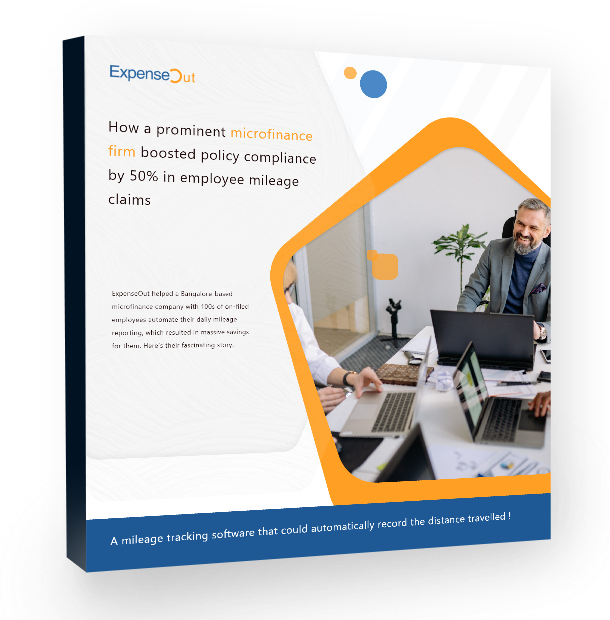Typically, employees who travel for business purposes submit reports for the miles / kilometers driven to the finance team. The finance team then verifies the reports manually and approves the reimbursements.
Even though the process is straightforward, many things can go sideways.
Employees may submit fake receipts, the finance team may not be able to have total visibility over the actual distance traveled or the amount spent per kilometer, business travelers may get reimbursements for personal trips, etc.
The list of potential problems is endless, but in this digital age, thankfully, organizations have the option of investing in mileage tracking software that can alleviate all these issues.
Benefits of implementing mileage tracking software
Using mileage tracking software, companies can get an accurate idea of how much their employees spend on fuel, the distance they have traveled, and how productive their business trips have been.
Essentially, the software is active on the employees’ phones and uses live GPS data to provide the management and finance team with real-time mileage information.
Here are all the benefits of implementing such a solution.
• Automatic and accurate tracking
The GPS integration with the software allows it to gather accurate mileage data. The data is then automatically prepared as reports, which can be accessed in real-time by the finance department and the management. Notably, the software can accurately track round trips and trips with multiple stops.
• Less time for mileage claims
On average, each employee spends 7 minutes preparing expense reports. Then, the finance team and management must verify each report before approving the reimbursements.
However, with effective mileage tracking software, you can streamline the process, significantly reducing the time spent on expense reimbursements. Therefore, business travelers can get quicker reimbursements for the distance they traveled, and the finance team doesn’t have to worry about fraudulent reports.
• Elimination of fraudulent expense reports
Mileage tracking software with GPS integration can go a long way in boosting policy compliance. The management can always be aware of the employees’ whereabouts. Using this information, the finance team can ensure that business travelers aren’t reimbursed for personal trips.
• Integrated system
The expense management software with mileage tracking can be integrated with any ERP or accounting system. This can save time for the finance team by eliminating the need for them to upload mileage data manually. Also, mileage tracking software can be integrated with payroll software to reimburse employees automatically along with their salaries.
• Advanced reports
It is essential to review mileage expense reports to improve the reimbursement process. Advanced reporting helps the finance team in the organization to get better insights from mileage expense data. With the information, they can identify departments or individuals that don’t comply with travel policy, cut back on fuel costs, reward employees who are most productive, etc.
Conclusion
Mileage tracking software removes the risk of potential fraud or reporting error and helps your business save time and money. Plus, you can make expense reporting easier for your employees. Ultimately the mileage tracking software can make the workforce efficient, helping the finance team save time by eliminating mundane tasks.
Start optimizing your organization’s mileage spend. Book a free demo with our product specialist today by reaching us at [email protected].
Also, you can read how we helped a client boost policy compliance by 50% in employee mileage claims.







